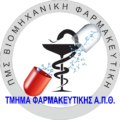Quality Markers
1. Quality indicators for faculty members
Average published papers per year of faculty members

The graph shows the academic work of faculty members produced per year. The increase in publications is linked to the effectiveness of the PMS operation both due to an increase in the number of students who practice experimentally and participate in research projects, as well as due to the resources that are used for laboratory consumables and other needs, facilitating the conditions for conducting experimental research works of the laboratories and faculty members.
Average citations to published papers by faculty members per year

The graph shows the citations made to published papers of faculty members by other authors. The graph depicts the increase in citations over time leading to the conclusion that faculty members are not only increasing their academic work output but that the work produced itself is contemporary, quality and reportable.
2. Indicators concerning candidates
a. Candidate applications per year

In the bar graph of the number of student applications per year, a steady upward trend of interested parties can be seen. This result is a representative indicator of the impact of the PMS and confirms the good quality of knowledge provision as well as the effectiveness of its promotion policy.
b. Percentages of departments from which prospective students - applicants come





According to the distribution pies for the percentage of student applications per Department, it is found that Chemists and Pharmacists show the greatest interest in participating in the PMS 'Industrial Pharmacy' and the other sciences at around 30%. This observation is reasonable since the academic subject of the postgraduate is closer to these two professions. The Department of Chemical Engineering and Biology has a constant participation in the 30% of the remaining scientists who are interested in the master's degree. Also another observation is that the number of applications of Chemists exceeds that of Pharmacists. This happens because the profession of Pharmacist to a large extent finds professional rehabilitation in Pharmacies.
c. Percentages of gender representation of candidates per year

The bar graphs show the difference in gender representation of candidates per academic year. PMS Industrial Pharmaceuticals according to the graphs attracts more women by a wide margin every year.
d. Average score of candidates' basic degree per year

According to the bar graphs, there is an increase in the average grade of the basic degree with the end of the years of operation. Approaching students of a high academic level is a goal for PMS BF.
4. Indicators concerning graduate students
a. Percentage of graduates professionally rehabilitated per academic year

The bar graphs show the restoration of graduate students per academic year which reach 100%.
b. Rates of different types of graduate employment per academic year

The largest percentage of student employment is in pharmaceutical industries. There is a percentage of students who, despite their employment in a pharmacy, are graduates of PMS. These are usually pharmacists who want to prepare in their pharmacy galenic preparations, cosmetics or to be able to carry out doctors' prescriptions for the preparation of a preparation.
c. Average degree grade of students per academic year

GPA of the degrees of the graduates per acc. year ranges from 9.51-9.22.
5. Indicators of productivity of students' academic work
a. Percentage of students with publications in the total number of students of the academic year

The bar graph shows the percentage of students of each academic year who published a research paper, e.g. 80% of the students of the academic year. year 2018-2019 published work. From the graph it is clear that the ac. year 2018-2019 the students were particularly productive, a fact justified by their small number (8 in total). Over the years, the increase in the number of students reduces their percentages.
b. Percentage of publications (out of total publications) per academic year

The bar graphs show the percentage of papers published by students of each academic year, e.g. 60% of the publications (between the time period 2018-2022) were produced by students of the of 2018-2019
The increased percentages of older students are to be expected as those continuing academically at the time of the graph have published more papers than younger ones.
c. Percentage of publications (out of total publications) per year

The bar graphs show the percentage of publications of the works per year, e.g. year 2018-2019 published 1% of works. The graph is expected as the program started its operation in the year 2018-2019 therefore the students participated in research papers potentially publishable after the spring semester of 2018-2019.
